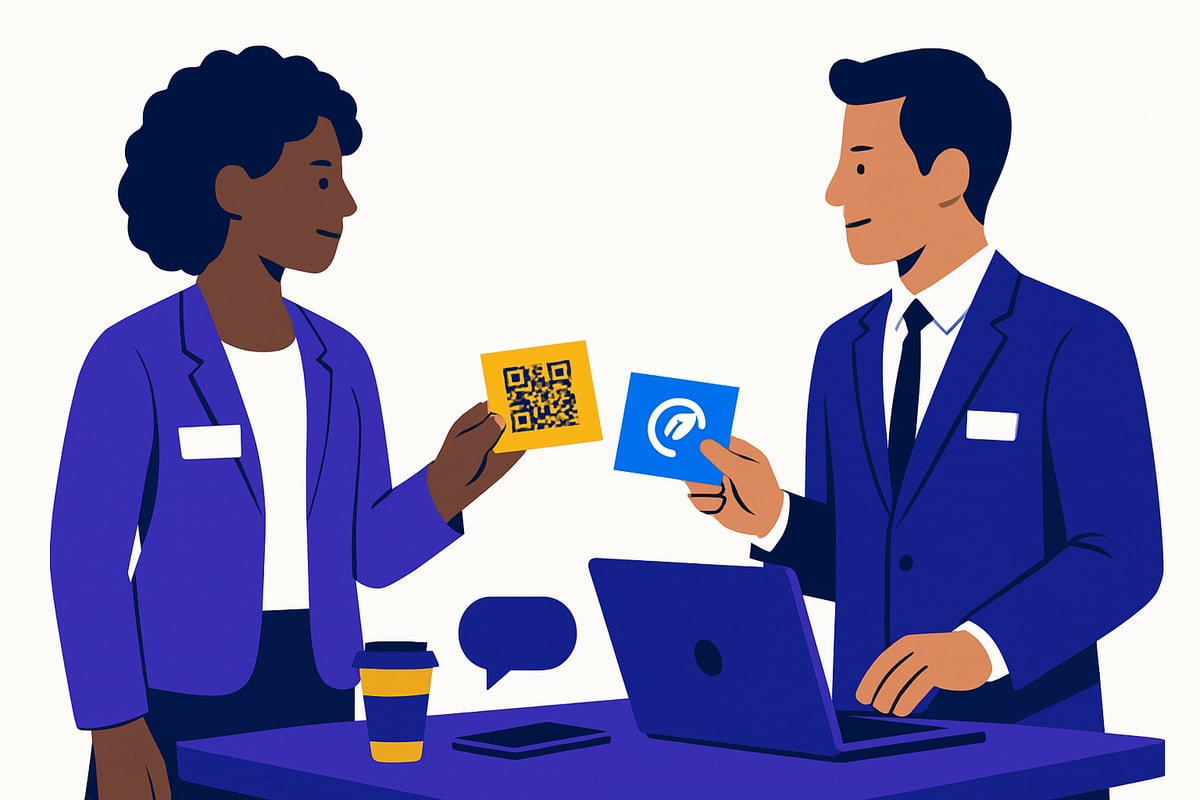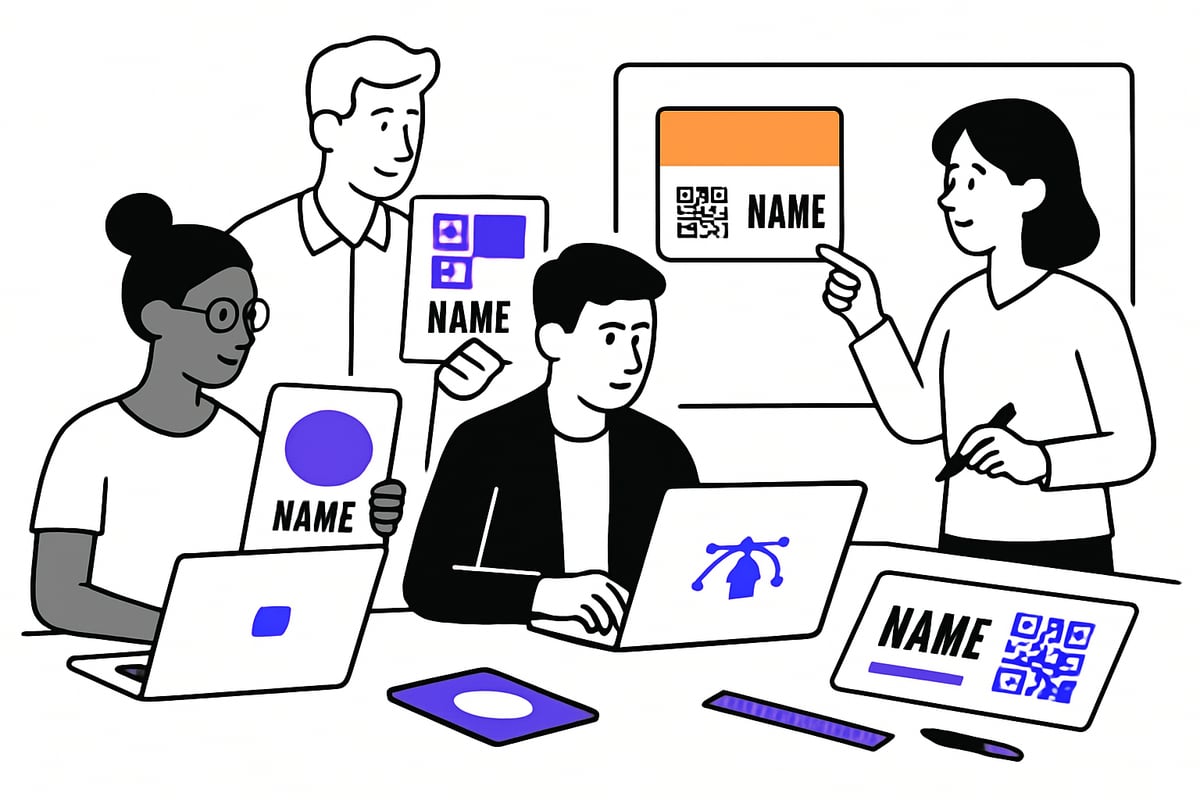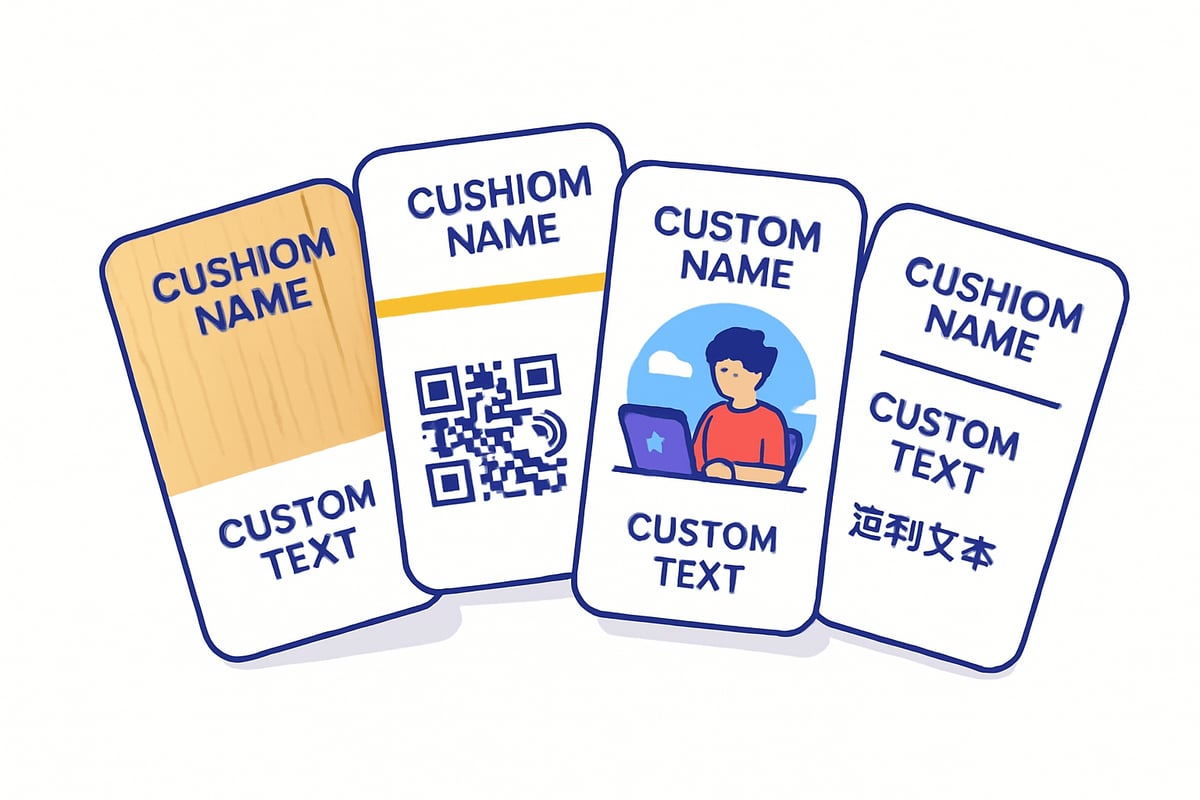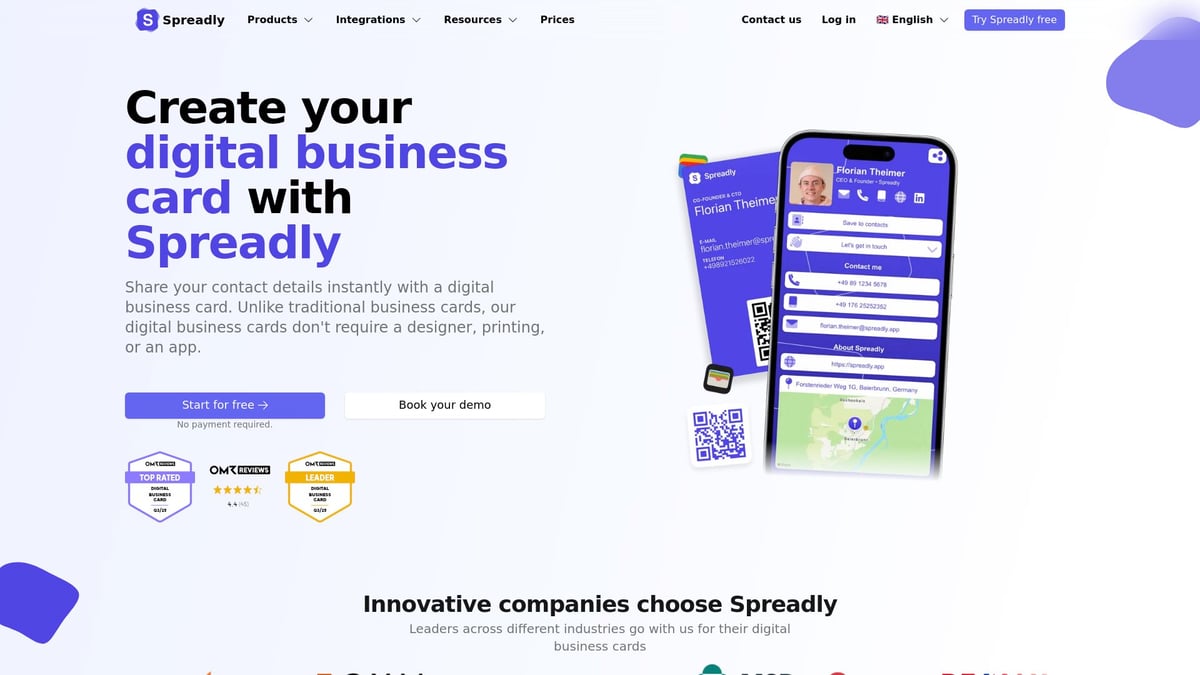Custom Name Card Guide: Personalize Your Professional Image 2025
12 minutes
11th of October 2025
In this article:
- The Rising Importance of Custom Name Cards in 2025
- Step-by-Step Guide to Creating Your Custom Name Card
- Customization Options: Making Your Name Card Stand Out
- Digital vs. Printed Name Cards: Which is Right for You?
- Best Practices for Ordering and Managing Custom Name Cards
Did you know that 72% of professionals say first impressions shape lasting business relationships? In 2025, the custom name card has become more than just a contact tool—it is a powerful extension of your personal and corporate brand.
With networking evolving and competition increasing, your custom name card can set you apart instantly. This guide will walk you through every step to create a name card that reflects your unique professional image.
Discover the latest trends, essential design tips, innovative customization options, and the pros and cons of digital versus printed cards. Ready to elevate your brand? Follow this comprehensive guide and make every introduction count.
The Rising Importance of Custom Name Cards in 2025
In 2025, the role of the custom name card is more significant than ever. As professionals return to face-to-face networking, these cards serve as a bridge between digital and personal interactions, making a lasting first impression in an increasingly competitive market.

The Evolving Role of Name Cards in Networking
Networking has transformed since the pandemic, with a renewed appreciation for in-person meetings and meaningful connections. The custom name card has maintained its relevance, even as digital tools proliferate. According to industry surveys, over 75% of professionals still exchange physical cards at events, valuing the tangible reminder of a new business relationship.
A custom name card is not just a contact tool, but a symbol of professionalism and intent. Its presence at conferences and meetings signals readiness and attention to detail, making it a must-have for anyone serious about building their network.
Key Trends Shaping Name Card Design in 2025
Design trends for the custom name card in 2025 focus on minimalism, bold color palettes, and eco-friendly materials. Interactive elements like QR codes are now standard, allowing seamless connections between physical and digital identities. Companies are choosing recycled paper, plant-based inks, and unique textures to reflect sustainability values.
For a deeper dive into these trends, including popular features and material choices, see Top Business Card Trends for 2025.
Businesses are also embracing unconventional shapes and finishes, making every custom name card a conversation starter. These design choices are backed by data showing that memorable cards lead to higher rates of follow-up and engagement.
Custom Name Cards as a Branding Tool
A well-crafted custom name card extends your brand beyond digital spaces. It reinforces your identity through consistent colors, logos, and messaging. For example, creative agencies often use bold illustrations or textured finishes, while law firms may opt for understated elegance and premium materials.
The tactile experience of handing over a custom name card leaves a psychological impact. It conveys professionalism, attention to detail, and a personal touch that digital exchanges alone cannot achieve. This physical connection helps differentiate you in a crowded market.
Balancing Digital and Physical: Hybrid Networking
Hybrid networking is the new standard, blending the strengths of the custom name card with digital enhancements. NFC chips and QR codes on cards link directly to digital profiles, portfolios, or scheduling tools, maximizing reach and convenience.
Professionals now carry both printed and digital versions, adapting to the needs of each event. Studies from hybrid networking conferences report greater engagement and more meaningful follow-ups when both formats are used together. The custom name card, when integrated with smart features, ensures you are remembered in any setting.
The ROI of a Memorable Name Card
Investing in a high-quality custom name card pays measurable dividends. Case studies show that unique cards can increase follow-up rates by up to 40%. The cost per card is minor compared to the potential value of a new client or partner.
Professionals who use memorable custom name cards often report faster conversions and better recall in competitive fields. Testimonials highlight how a thoughtful design, durable material, and interactive features can turn a simple introduction into a lasting business opportunity.
Step-by-Step Guide to Creating Your Custom Name Card
Designing a custom name card in 2025 is both an art and a strategic decision. Each choice, from visuals to materials, impacts your professional image and networking success. Follow this step-by-step guide to ensure your card captures attention and reflects your brand with precision.

Step 1: Define Your Professional Image and Objectives
Start your custom name card journey by clarifying what you want to communicate. Are you aiming for creativity, authority, or trustworthiness? Identify your target audience and networking goals.
For example, a creative agency may opt for bold visuals and playful fonts, while a law firm might prefer a classic layout with conservative colors. Consider what first impression you want to leave. A custom name card should embody your values, expertise, and mission.
List your core attributes and ask: Will this card support my professional story? By defining your objectives early, every design decision becomes intentional and impactful.
Step 2: Choose the Right Card Size, Shape, and Material
A custom name card can stand out with the right dimensions and tactile experience. While the standard US size is 2"x3.5", consider alternatives like square, mini, or rounded-edge cards for extra flair.
Material choices influence durability and perception. Here’s a quick comparison:
| Material | Durability | Eco-Friendly | Tactile Feel |
|---|---|---|---|
| Premium Paper | Medium | Varies | Smooth/Matte |
| Recycled Stock | Medium | Yes | Textured/Natural |
| Plastic | High | Sometimes | Sleek/Glossy |
| Metal | Very High | No | Cool/Heavy |
Select a material that matches your brand values. Remember, a custom name card should feel as impressive as it looks.
Step 3: Select Design Elements and Layout
The visual impact of your custom name card relies on smart design choices. Prioritize readability with clear, professional fonts and strategic use of whitespace. Choose a color palette that aligns with your branding and enhances visibility.
Place your logo where it’s most prominent, but not overwhelming. For inspiration, review Business Card Design Trends 2025 to see how minimalism, bold colors, and digital integration are shaping modern layouts.
Effective layouts differ by industry: creatives may use unconventional orientations, while consultants might opt for structured, balanced designs. Let your custom name card speak to your field and personality.
Step 4: Incorporate Customization Features
Customization transforms a basic card into a memorable touchpoint. Consider adding photos, unique illustrations, or embossed elements to your custom name card. Special finishes like foil stamping or spot UV can elevate tactile appeal.
For a modern twist, integrate QR codes or NFC chips to connect recipients to your digital portfolio or LinkedIn. Some professionals use augmented reality, allowing the card to trigger a video or presentation when scanned.
Interactive features enhance engagement, making your custom name card a conversation starter. Choose elements that support your networking goals and brand identity.
Step 5: Ensure Information Clarity and Accuracy
A custom name card must deliver your details clearly and concisely. Include your name, title, company, phone, email, website, and relevant social handles. Prioritize the information hierarchy, placing the most important details first.
Avoid clutter by limiting text and using whitespace effectively. Double-check all data for accuracy—typos or outdated info can undermine credibility. Common mistakes include missing contact details or hard-to-read fonts.
A well-organized custom name card ensures your connections can reach you without confusion or hesitation.
Step 6: Proof, Print, and Order Efficiently
Before printing, carefully proofread your custom name card for errors. Print a test version to check colors and layout alignment. Evaluate whether local print shops or online providers better suit your needs.
Compare turnaround times, quality, and pricing. Many services offer bulk discounts or expedited shipping for events. Keep in mind, a reliable provider ensures your custom name card arrives on time and matches your vision.
Efficient ordering minimizes stress and maximizes professionalism.
Step 7: Prepare for Distribution and Networking
The final step is presenting your custom name card with confidence. Store cards in a dedicated holder to keep them pristine. When exchanging cards at events, offer them with a smile and a personal introduction.
Plan memorable follow-ups by referencing your meeting or including a handwritten note. For virtual connections, share a digital version of your custom name card or use QR codes for instant access.
Respect etiquette in every interaction. A thoughtful approach ensures your custom name card leaves a lasting impression in any setting.
Customization Options: Making Your Name Card Stand Out
Creating a custom name card for 2025 is about more than just sharing contact details. It is an opportunity to express your values, creativity, and global outlook. With the right customization, your card can open doors and make a memorable impression.

Material Innovations and Eco-Friendly Choices
Sustainability is at the forefront of custom name card trends in 2025. Many professionals now choose recycled card stocks, plantable seed papers, or innovative materials like bamboo and recycled plastics. These options offer durability and a unique tactile feel, while also reflecting a commitment to the environment.
When selecting materials, consider certifications such as FSC or Green Seal to ensure authenticity. According to recent studies, over 60 percent of business professionals prefer eco-friendly options for their custom name card. Suppliers now offer a wide range of green materials, making it easy to align your branding with environmental values.
Advanced Printing Techniques and Special Finishes
Special finishes transform a custom name card into a tactile experience. Techniques such as embossing, debossing, foil stamping, spot UV, and die-cutting add depth and distinction. Embossed logos or gold foil accents highlight your brand and create a premium feel.
The choice of finish impacts cost and production time, so plan accordingly. For inspiration on trending finishes and bold design ideas, review the Top Business Card Trends of 2025. Combining these finishes with creative layouts ensures your custom name card stands out in any professional setting.
Digital Integrations and Smart Features
Integrating digital features with your custom name card bridges the gap between physical and online networking. Adding a QR code can link directly to your portfolio, LinkedIn, or booking page. NFC chips enable instant contact sharing with a smartphone tap, while augmented reality elements provide interactive experiences.
Professionals are increasingly adopting these smart features to streamline follow-ups and enhance engagement. Data shows that cards with digital integrations see higher retention and response rates. Including these elements in your custom name card demonstrates innovation and forward-thinking.
Personal Branding Through Visual Elements
Visual elements are key to differentiating your custom name card. Incorporate personal photos, custom illustrations, or unique icons to reflect your industry and personality. Color psychology also plays a role—select hues that communicate trust, creativity, or leadership, depending on your brand.
Creative sectors often use bold visuals, while corporate fields prefer clean, professional layouts. A thoughtfully designed custom name card helps reinforce your brand identity and makes a lasting impression during networking.
Multilingual and International Considerations
In a global business environment, your custom name card should cross language barriers. Consider printing information in multiple languages or tailoring content for specific markets. Layout adjustments may be necessary for non-Latin scripts or right-to-left writing systems.
International etiquette also matters. For example, in Japan, presenting a bilingual custom name card is a sign of respect. Thoughtful adaptations for global audiences showcase your professionalism and cultural awareness.
Digital vs. Printed Name Cards: Which is Right for You?
Choosing between digital and printed options for your custom name card is a strategic decision in 2025. Both formats offer distinct advantages, and the right choice depends on your networking goals, industry, and audience.
Pros and Cons of Printed Name Cards
Printed custom name cards remain a staple in many professional settings. Their tactile feel, visual impact, and ease of exchange make them memorable during face-to-face meetings and events.
Table: Comparing Printed Name Card Pros and Cons
| Pros | Cons |
|---|---|
| Tangible, memorable impression | Reprinting needed for updates |
| Easy to exchange at events | Environmental impact |
| Supports branding with finishes | Higher long-term costs |
Many industries, such as law, finance, and design, still favor the traditional custom name card. Trends for 2025 highlight minimalist layouts, bold colors, and eco-friendly materials, as discussed in Business Card Trends 2025. Printed cards offer a sense of permanence and professionalism that digital formats may not fully replicate.
The Rise of Digital Name Cards
Digital custom name card solutions have grown rapidly, offering convenience and flexibility for modern professionals. With digital cards, you can instantly update details, add multimedia content, and share your contact information through a simple link or QR code.
Digital options eliminate the need for physical printing or shipping, making them accessible anytime, anywhere. They are particularly valued in tech, creative, and international industries where seamless updates and global reach are essential.
User feedback shows high satisfaction rates for digital custom name card platforms, especially among remote teams and professionals who prioritize sustainability. The ability to integrate portfolios, videos, or scheduling tools directly within your card sets digital formats apart.
When to Use Each Format (or Both)
Deciding between digital and printed custom name card formats depends on context. Printed cards work best at in-person conferences, trade shows, and formal events where physical exchange creates a lasting impression.
Digital cards are ideal for virtual meetings, remote networking, or when connecting with international contacts. They are also invaluable for professionals who frequently update their details or wish to track engagement.
Many individuals now choose a hybrid approach, carrying both digital and printed custom name card options. This flexibility ensures you are prepared for any networking scenario, maximizing your reach and adaptability.
Spreadly: The Modern Digital Business Card Solution
Spreadly offers a sophisticated platform for creating and sharing a digital custom name card. You can personalize your card with your brand, integrate rich media, and share instantly via QR code, link, or wallet. Spreadly supports CRM and HR integrations, making it perfect for both individuals and enterprise teams.

The platform requires no app installation, enables fast setup, and ensures compliance with privacy standards. Spreadly also offers lead capture and analytics, helping you measure the impact of every custom name card exchange. With free trials and scalable enterprise options, Spreadly is a smart choice for professionals seeking modern networking solutions.
Best Practices for Ordering and Managing Custom Name Cards
Selecting the right approach for ordering and managing your custom name card supply is essential for maintaining a professional image. A streamlined process ensures your cards are always ready for every opportunity, whether in-person or digital.
Choosing a Reliable Printing or Digital Provider
Start by evaluating providers for your custom name card needs. Look for consistent print quality or digital clarity, fast turnaround, and strong customer support. Design flexibility is vital, so choose companies that allow full customization and support sustainable materials.
Compare top-rated print shops and digital platforms. Read user reviews, focusing on satisfaction with order accuracy and delivery times. Providers offering eco-friendly options and responsive service help you build your brand with confidence.
Managing Bulk Orders and Reorders
Efficient bulk ordering keeps custom name card inventory steady for teams and events. Estimate quantities based on your networking calendar, and track usage through simple spreadsheets or inventory apps.
Automated reordering systems save time and prevent last-minute shortages. Consider bulk discounts and early ordering for large conferences. This approach optimizes costs and ensures you never run out of cards at critical moments.
Keeping Your Information Up-to-Date
Outdated details on a custom name card can harm your professional image. Update job titles, phone numbers, and branding regularly. Digital card platforms often allow instant edits, while print cards require scheduled reviews before reordering.
Set calendar reminders for quarterly checks. Use shared documents to track team updates. These habits ensure every card you hand out reflects your current status and contact information.
Security, Privacy, and Compliance Considerations
Protecting your contact data is a must with any custom name card, whether printed or digital. For digital cards, ensure platforms are GDPR-compliant and offer secure sharing options. Printed cards should be stored carefully to avoid unauthorized access.
Best practices include using password-protected files for digital templates and shredding outdated physical cards. Prioritizing security and privacy safeguards your reputation and builds trust with new connections.
After exploring how custom name cards can transform your professional image and help you stand out in 2025, you might be wondering how to put these insights into action for yourself or your team. With Spreadly, you can easily create a modern digital business card that’s always up to date, on brand, and ready to share in seconds—no designers or printing hassles needed. Whether you want to integrate rich media, capture leads, or ensure seamless CRM syncing, the process is straightforward and secure. If you’re ready to experience the benefits firsthand, you can try for free and see how easy it is to personalize your professional presence.






